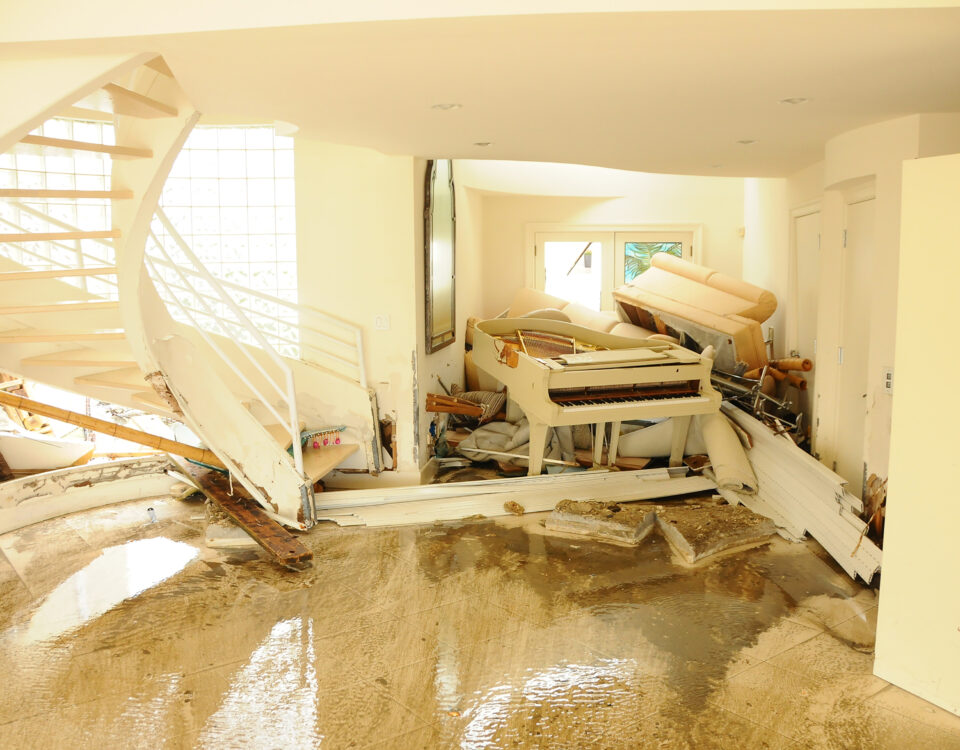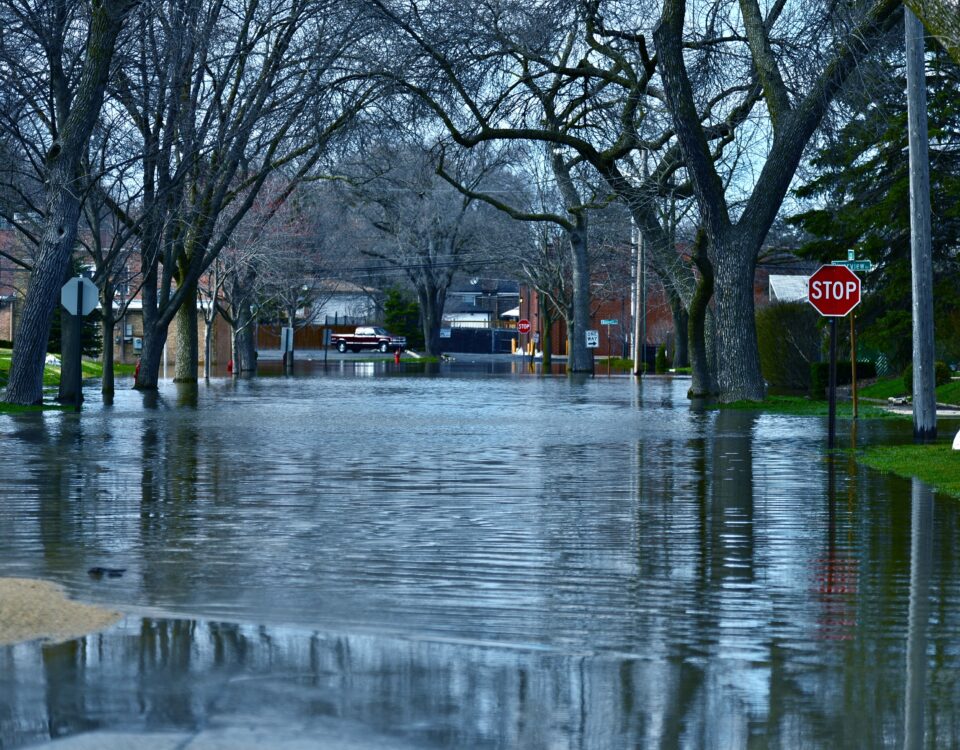
MORE THAN 130 ORGANIZATIONS AND BUSINESSES SUPPORT A FEDERAL REAL ESTATE FLOOD DISCLOSURE REQUIREMENT
October 12, 2022
Hurricane Florence: What the Carolinas Learned from the Second 1,000-Year Flood in Two Years”
October 12, 2022What happens when a massive flood collides with a global pandemic?
In some places, this question is no longer theoretical. Only weeks ago, Hurricane Hanna, the first major storm of the 2020 hurricane season, bore down on a COVID-19 hotspot in southern Texas. And Tropical Storm Isaias just recently battered the East Coast, bringing widespread power outages and devastating flood and wind damage to many communities still fighting the coronavirus.
But Hanna and Isaias are only a taste of what may come as the pandemic continues into peak hurricane season – one that scientists expect to be unusually active. As at-risk regions prepare for this double threat, here’s what you need to know about the intersection of flood and COVID-19 preparedness.
A Safe, Socially Distanced Evacuation is Possible, But We Still Need More Shelters
Not everyone may be able to evacuate to a friend or family’s home during a flood. When a storm uproots tens of thousands of people, many travel to designated evacuation shelters like gyms or high schools. But an overcrowded, enclosed space is a recipe for rapid transmission of COVID-19.
Emergency managers fear that people will stay away from shelters this storm season to avoid COVID-19 unless they know the evacuation can be done safely. The American Red Cross, which manages many evacuation shelters around the country under the supervision of FEMA, has planned shelters that adhere to CDC social distancing guidelines.
That means, however, that shelter capacity is cut by roughly 60 percent. To account for capacity limits, FEMA has urged community decision makers to use vacant hotels and empty dormitories as overflow. Florida has begun building more shelters to prepare for this year’s heavy hurricane season, but the state will need to erect a lot more to plan for worst-case scenarios and still maintain square footage necessary for social distancing. Other states in flood-prone areas should follow suit.
Regardless of your local shelter situation, the CDC advises evacuees to carry a personal kit consisting of hand sanitizer, masks, disinfectant wipes, and hand soap, in case social distancing isn’t possible.
Flooding Puts COVID-19 Testing, Reporting, and Treatment at Risk
A hurricane or tropical storm may be a threat to community-wide COVID-19 operations, from treatment at hospitals to testing centers to case reporting. But coastal areas aren’t the only communities with a high flood risk that could exacerbate COVID-19. Take the failed dams in Michigan that caused catastrophic flooding amid a worsening handle on the virus as an example.
Wondering about the likelihood of a flood in your area? Check your risk.
Flooding Forces States to Halt Testing, Disrupting Reporting
Severe weather can severely throw off an area’s COVID-19 numbers. Many states like Florida have had to pause drive-through COVID-19 testing sites for several days while dealing with a hurricane or tropical storm, leading to a temporary decline in positive cases followed by a dramatic uptick.
Bad Weather Conditions Deter People from Getting Tested
A storm of any size may also discourage people experiencing COVID-19 symptoms from seeking medical care due to poor road conditions or fear of further injury. This can negatively impact both case reporting accuracy and health outcomes.
Hospitals Rely on Generators to Maintain Treatment During an Outage
When it comes to treatment, generators are crucial for medical continuity during any flood season, and especially now. Isaias and Hanna caused a number of hospital power outages, but thanks to on-site generators hospital workers were able to keep COVID-19 and other critical condition patients sustained on care equipment such as ventilators.
Homeowners Can Handle Flood Damage While Minimizing Virus Exposure
In the event of home damage during a flood, homeowners can manage their insurance needs remotely: flood insurance policyholders can file a claim from home or wherever they’ve evacuated to. Virtual adjusting enables homeowners to file claims immediately via mobile apps, video calling, and drones to streamline claims distribution.
Thankfully, addressing property-level flood damage doesn’t pose a significant risk of COVID-19 transmission, either. Most home restoration projects for things such as fallen trees and power outages can be executed from a distance.
Widespread power outages like those caused by Hurricane Isaias are highly disruptive to the millions of people working from home during the pandemic, but communities have stepped up to provide speedy repairs and accommodations. Many municipalities impacted by Hurricane Isaias, for example, have instituted socially distanced public cooling and charging stations for people whose homes are currently without power.
Not sure how to file an insurance claim in the event of a flood? Head to our Claims Basics for help.
See articles of Flood Restoration
The 2019 Midwestern Floods:
The Insidious Damage of Inland Flooding



